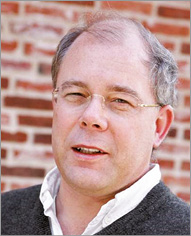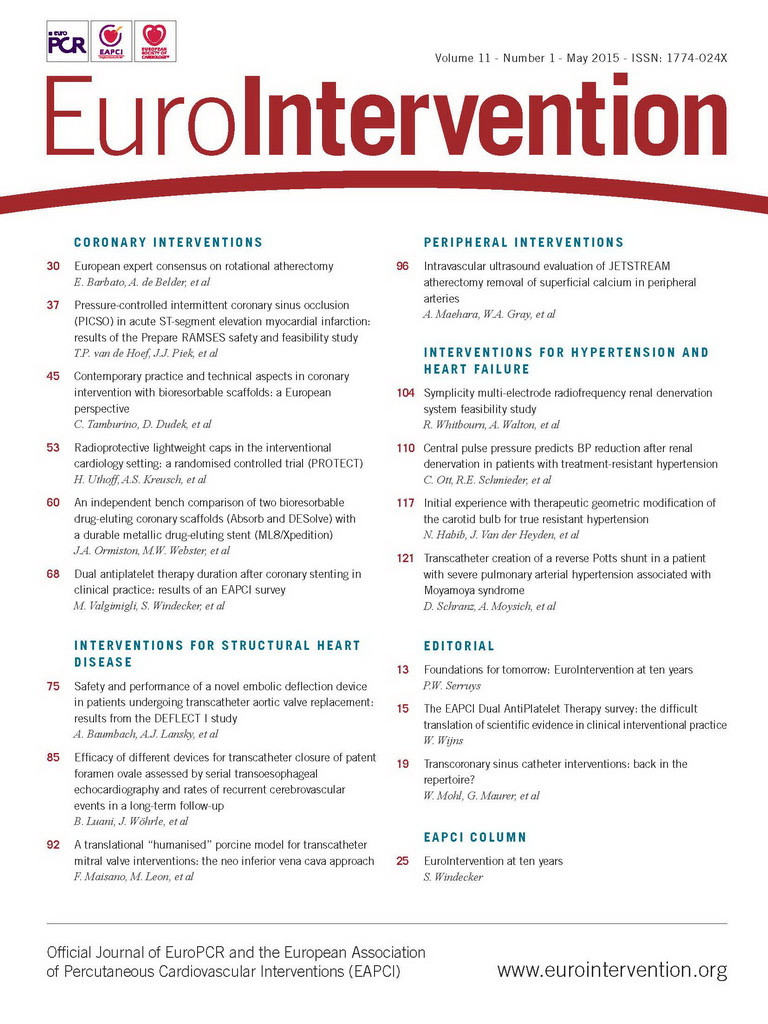NEWS
■ The EAPCI Fellows Course will take place on the 19th and 20th of June at the Heart House, Sophia Antipolis, France. Covering all the core subjects in the interventional cardiology syllabus, it is aimed at medical doctors who have started or have recently completed a programme of training.
■ Enrol now in the EAPCI eLearning platform! The EAPCI developed this 24-month online learning programme with 48 web-based educational courses, 450 MCQs covering 7 EAPCI core curriculum topics and using 3 modules: knowledge, skills, and professional development…All leading to a certificate of excellence in training in interventional cardiology!
■ Become an EAPCI member today! We’ve reached more than 6,500 members from 131 countries, Isn’t it time you joined too? Become part of the responsive and highly interactive European Interventional Cardiology network. And remember, EAPCI membership is FREE.
EAPCI Focus on the Swedish Working Group on Percutaneous Coronary Interventions
An interview with the President, Göran Olivecrona
What does the EAPCI membership mean for a national society?
I think that the EAPCI has been a tremendous help in its role as a branch of the ESC. We have had longstanding difficulties finding our voice within the Swedish Cardiology Society, in part due to their perception of us as “maverick interventionalists”. Today, thanks to the formation of the EAPCI, the Swedish Cardiology Society came to realise that there needed to be a real Working Group on interventional cardiology. The EAPCI helps facilitate an excellent platform for our presence at EuroPCR. The association has been tremendous in allowing us to host symposiums on a national level during EuroPCR, both together with other countries or even alone, which is something that has had a favourable impact for the Swedish Society of Cardiology. I believe this is a very important point, because it has brought us closer together as a group within Sweden. We are very inclusive and wish to give many more people a chance, something which has brought our community together in a better way. During our own yearly Working Group meetings, we mirror our national discussions alongside those of the EAPCI. For example, we discuss the type of curriculum for interventional cardiologists and use the EAPCI core curriculum for training as a foundation. We have translated this curriculum into Swedish and made some slight modifications due to our geography and natural issues in the way we practise. Essentially, however, it is more or less the same document. We have posted it on our website and we are actively trying to encourage hospital administrators to adopt this programme and curriculum to supplement the additional training that now exists on top of the cardiology training you receive during a residency period here. We also promote the annual Nordic Interventional Cardiology Conference (NICC) which is a growing meeting hosted by the three Nordic Working Groups.
What are the current issues related to the national society?
Naturally, there are many obstacles regarding the adoption of the curriculum, primarily as training is something that administrators consider happens naturally. They don’t realise that, in my opinion, they have to intentionally set aside dedicated time in the different cathlabs for up to two years for each interventionalist who wishes to train – it’s not simply a question of hiring a cardiologist and expecting him or her to somehow mature into an interventional cardiologist. I think the ideal approach is that one receives a licence to practise as part of completing a real structured fellowship programme. The curriculum is presently not recognised by the Ministry of Health, and its adoption remains an interventional goal. We are seeing a few hospitals which have a shortage of interventional cardiologists, but it is these same hospitals that are more positive in adopting our curriculum. Parallel to this development comes the e-learning platform. Today we are seeing more and more people going onto the ESC e-learning platform with their mentors or supervisors, and I think this is something which will take some time to spread slowly throughout Sweden and hopefully Europe, again with the eventual goal of being able to get a certification from the regulating health authorities similar to the way in which you get your certification as a cardiologist. I think this is a core priority, and one that we are dedicated to working towards on a long-term basis to achieve our goal. This is not something that is going to happen overnight, but rather is a process that could perhaps take 5 to 10 years. We have other goals of course, one of which is to see more women entering cardiology and interventional cardiology. The initiative for women in interventional cardiology was actually established in Sweden well before that of the EAPCI. We performed our own survey in Sweden and tried to analyse why there were so few women in cardiology. We looked at the entire country and how many women were actually practising cardiology and also how many had started and then quit. We also tried to understand how we could recruit more women in interventional cardiology. Essentially, the most significant reason why people are not able to hire female interventional cardiologists is that there is not already one on staff. So the difficulty is getting the first one: once you have the first female interventional cardiologist on staff, it is far easier to get the second.
Concerning Fellows, I think the majority stay in Sweden with very few going abroad. There are many reasons for this. One of the main reasons is that, at this point in their lives, many of them are forming families and it is a very difficult moment for them to leave. They generally have fairly stable working conditions once they have their residency. It’s worth bearing in mind that training an interventional cardiologist is a long and tedious process, especially as there are no established fellowship programmes. What this means is that you have to be very present around your cathlab for a certain number of years in order finally to attain a position where one day you will be allowed to go on call. This is a problem linked to the fact that there is no set “end of training” and, for that matter, there’s no necessary starting date either. It is a long, drawn-out process and so it would not be a very good idea for these fellows to leave and go away for a year. It is much better to have a time-structured curriculum that they can follow. I think that this would be easier to organise than going abroad for a longer period of time. Formalising the training process is therefore very important.
Luckily, we have a very healthy research environment in Sweden. Historically, Sweden has always been open to research projects and there are many opportunities here. It largely depends on the young operators or interventionalists themselves and how much time they have available or want to consecrate to research; but, when they decide, there is plenty of research to go around for anyone and everyone who chooses to do so.

Göran Olivecrona, President of the Swedish Working Group on Percutaneous Coronary Interventions
![]()
President: Göran Olivecrona
Vice-President: Jens Jensen
Contact details: [email protected]
Working Group website: http://www.cardio.se/arbetsgruppen-f%C3%B6r-pci
Upcoming annual meeting: April 21-22, 2016, Örbero, Sweden
Founded: 2008
Members: 143
EAPCI members: 67

